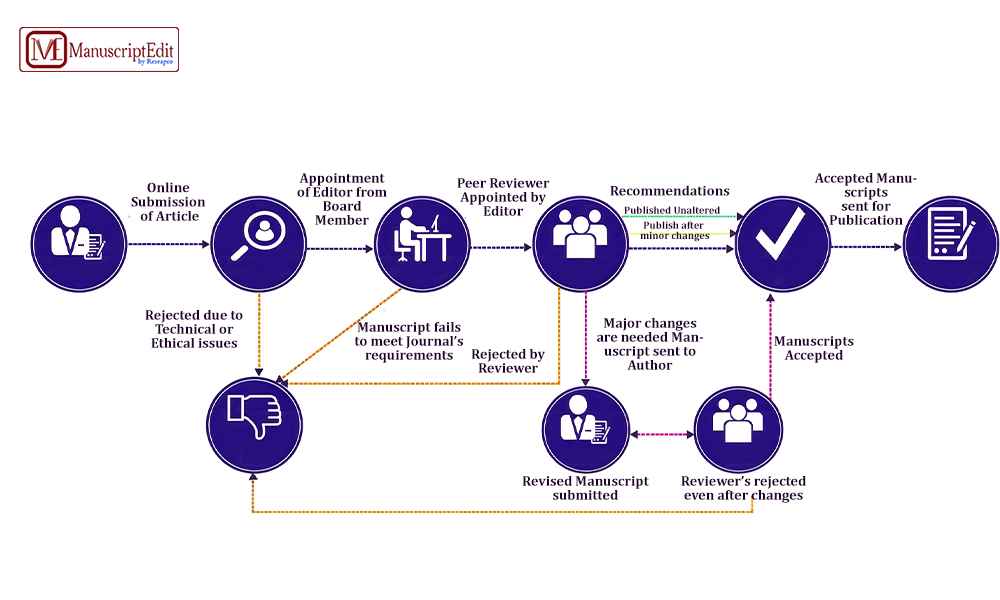
A key component of evidence-based practice is peer review, which guarantees that specialists thoroughly examine and approve research. It is an essential publication process that preserves the caliber and integrity of scientific writing.

To assist writers in navigating the peer review process and increasing their chances of publication, this post provides valuable advice and insights.
What is Peer Review?
A key component of evidence-based practice is peer review, which entails specialists assessing academic work for relevance, validity, and quality. It guarantees the validity and integrity of research before it is shared.
Blind peer review eliminates prejudice by keeping writers’ names a secret. By granting reviewers anonymity, double-blind review reduces the possibility of partiality. Although it encourages accountability and teamwork, open peer review can induce biases because the identities of authors and reviewers are clear.
Knowing these kinds clarifies the subtleties of the review procedure. It helps choose the best strategy for preserving objectivity and integrity in scientific discussions, keeping the norms of evidence-based practice.

What does a Reviewer do during Peer Review?
Peer review involves critically assessing the manuscript’s content, methods, and conclusions by the reviewer. They evaluate the validity, importance, and field relevance of the work. They highlight the authors’ advantages and disadvantages, suggest enhancements, and offer helpful criticism.
Editors also verify that the work is accurate, precise, and follows the journal’s rules. Their goal is to ensure the manuscript satisfies rigorous scientific requirements and significantly contributes to the field.
How can Peer Review be facilitated in Evidence-based practice?
Authors can improve peer review by using techniques like concise, straightforward language to make their work accessible to read. Sturdy technique and outcomes support trustworthiness, and background data and pertinent context provide a thorough understanding.
Being receptive to reviewer feedback indicates a dedication to raising the caliber of the job. By encouraging positive participation, these procedures make peer review more accessible and more advantageous for all parties.
Peer Review Process Example
Manuscript submitted → editorial review → peer review by experts → revisions based on feedback → re-review → acceptance or rejection.

How do you Facilitate a Review?
You should be ready for helpful criticism when you submit your work for peer review.
- Anticipate a close analysis of your approach, findings, and recommendations.
- Recognize that the goal of reviewer feedback is to improve the quality of your manuscript.
- Recognize constructive criticism as an opportunity to improve.
- React to criticisms with professionalism, ensuring that every point is addressed in detail. Do accept well-founded criticism and give concise justifications for any changes made.
- Carefully edit your work, considering ideas while upholding your academic integrity.
- Showcase your manuscript’s development and clarity when you resubmit it.
Conclusion
To sum up, peer review is an essential part of evidence-based practice that guarantees the caliber and legitimacy of research. Authors should welcome peer review as a chance for growth, advancement, and helpful criticism.
Authors can improve their writing, bolster their claims, and eventually increase knowledge in their profession by participating in the process.
References
- https://rmit.pressbooks.pub/researchwritingmodules/chapter/the-peer-review-process/
- https://www.scribendi.com/academy/articles/peer_review_process.en.html
- https://www.editage.com/insights/understanding-the-peer-review-process-a-step-by-step-guide-for-researchers
